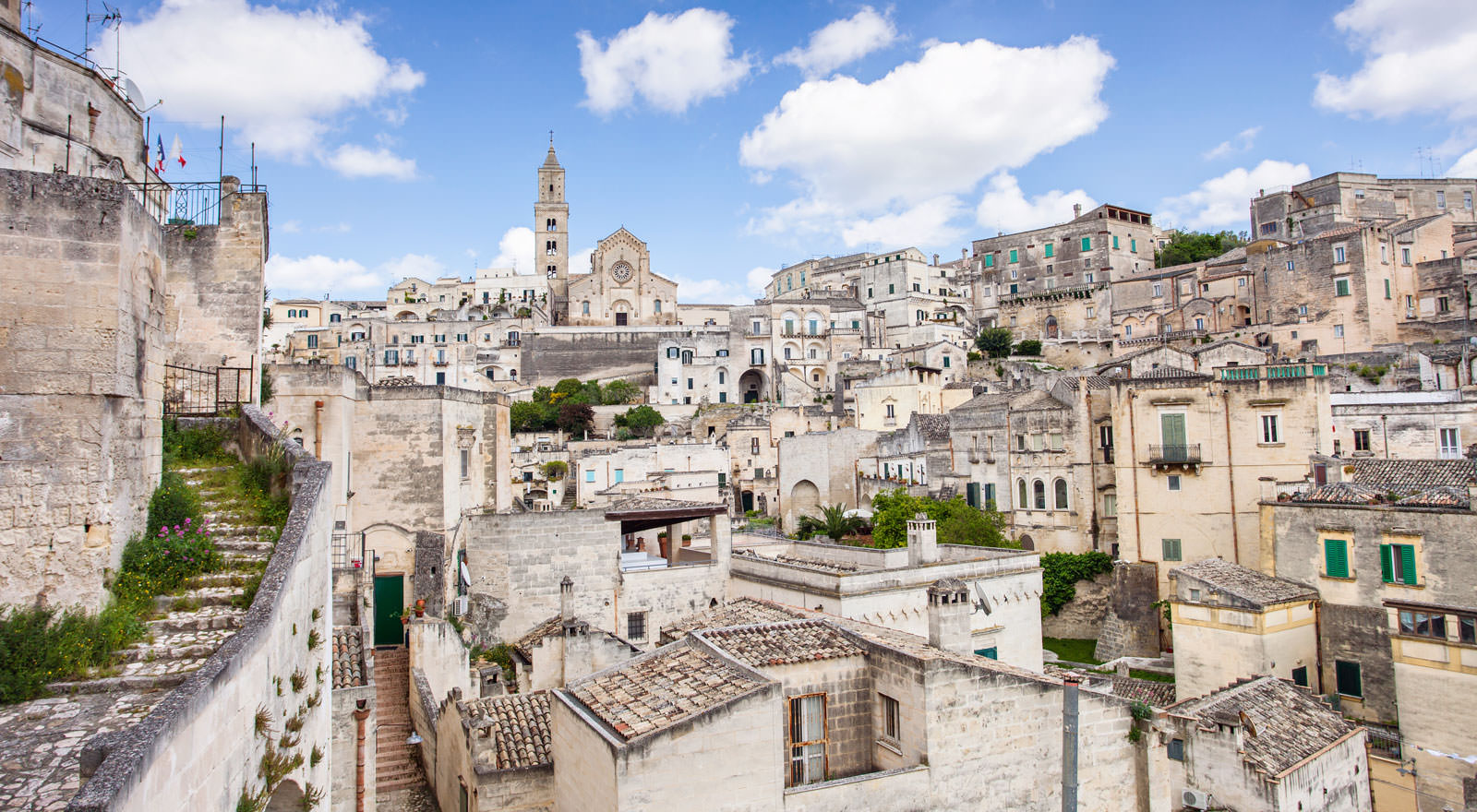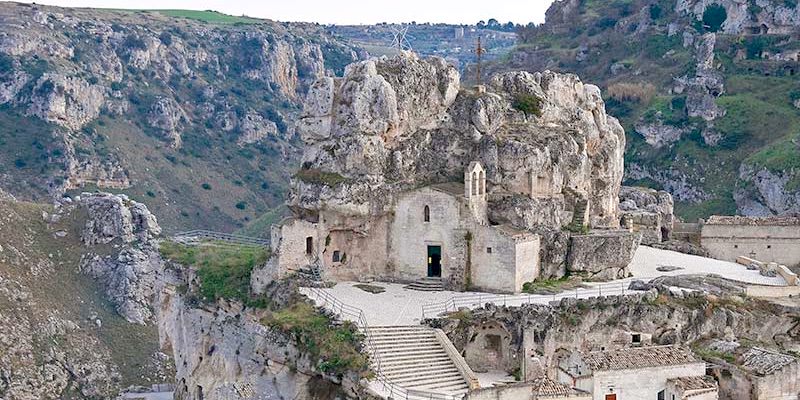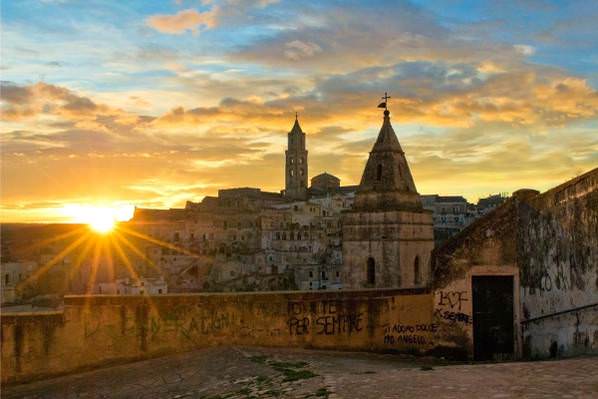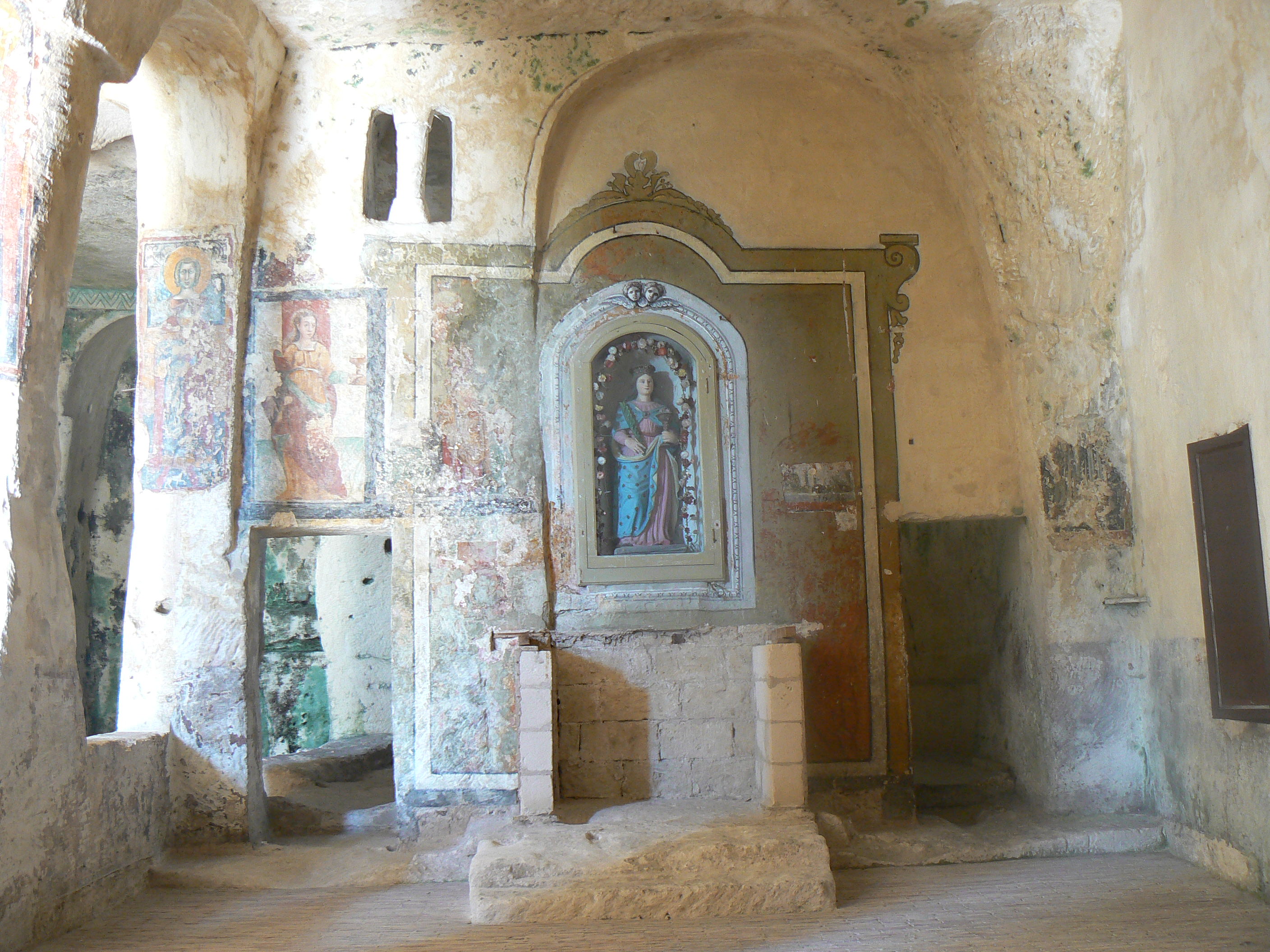What to see in Matera: the city of the Sassi
The first settlements in the land of Matera date back to the Paleolithic era and developed in the natural caves which characterized the rocky landscape of Matera. In the years the caves excavated by men in the rocks added to the natural ones, finding different places for shelter from natural agents. The rocky settlements constituted the first kind of urban nucleus with rooms which can be admired inside buildings built from the Middle Ages onwards.

After having crossed the prehistoric steps: the Paleolithic era, the Neolithic era and the other periods, Matera was strongly influenced by Christianity. The Christian footprint became important in short time. In the Middle-Ages the rocky landscape was transformed by the construction of important places of worship.During the Middle-Ages different buildings were built: the majestically Cathedral of Matera, St Giovanni Battista church, St. Domenico church, St. Maria della Valle Verde church on the Appian way. From this moment a real urban nucleus took place, at first concentrated around the Cathedral, which lies on the top of the hill of the Civita (Civitas, city) which divides into two parts the “Sassi”: The Barisano one, facing east and the Caveoso one, facing south. The “Sassi” of Matera stand on one of the side of a canyon excavated in the years by creek Gravina. On the other side there is the historical archeological park of rocky churches of Matera, better known as Park of Murgia Materana, whose landscape represents the original context of that places, developed in the years with urban settlements only on the side of Sassi. The Park houses the oldest settlement of the land. There are “the cave of the bats” whose paleolithic finds has been preserved in the Domenico Ridola Museum, the neolithical villages of Murgecchia, Murgia Timone and Trasanello in the north and rocky villages of the Selva, the Saraceno village in the south.
In 1993 UNESCO declares the Sassi World Heritage of Humanity. The Sassi are the sixth site in Italy, in chronological order, the first in the south.On the occasion of this designation, for the first time Unesco uses in the evaluation methods and the explanatory statements the concept of “Cultural landscape”, which will later be used to justify the inclusion of additional sites in the world. On 17th of October 2014 Matera was designated European Capital of Culture for 2019.
Rocky Churches
Of particular interest are the rocky Churches which can be visited in the Sassi of Matera. They represent the evolutive passage from prehistory to Christian era. The churches in fact are situated in places of special importance which were places of worship since the rocky civilization.
Santa Maria de Idris - San Giovanni in Monterrone
St Maria de Idris Church is situated inside the rocky spur of Monterrone which dominates the Sasso Caveoso, near St Pietro Caveoso Church and the square with the same name. The position is wonderful and offers a beautiful panorama on the city.

San Pietro Barisano
It is situated in the Sasso Barisano, at first called St. Pietro de Veteribus, and is the biggest rocky church in Matera. The archeological investigation allowed to find the first rocky settlement, which takes origin in the XII-XIII centuries, under the floor.

Santa Lucia alle Malve
The rocky Church of Santa Lucia alle Malve is situated near St Maria de Idris in Malve district. It’s the first female monastic Benedictine settlement, the most important in Matera (VIII century). Inside the church there are beautiful wall painting.
